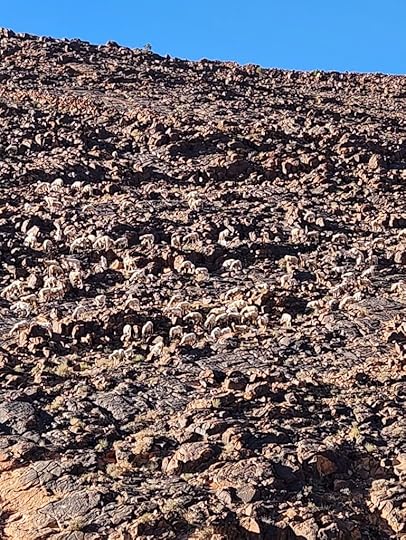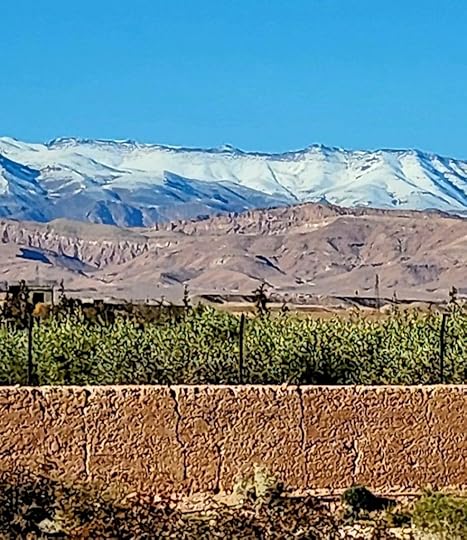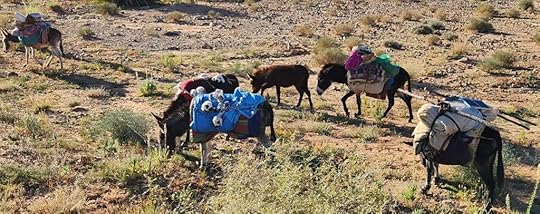Moroccan Sheep Migration: A Nomadic Tradition
(Click on the two video links below)
Our OAT Tour (Overseas Adventure Tour) was winding through the mid-Atlas Mountains of Morocco in 2024 when our guide, Mohamed told our driver to stop the bus and said with excitement, “Come and look!” Mohamed is Amazigh or Berber as Westerners call the indigenous people. (Amazigh is their original ethnic name. The word “Berber” comes from the Latin word barbarus, which was used by the Romans to describe non-Latin-speaking people. The term is considered offensive by many Berbers today.).
He pointed our gaze to the crop of mountain terrain that consisted of medium to large beige boulders some the size of a refrigerator. I strained my eyes to see nothing interesting. “Look closer. See the movement?” he exclaimed.
I was perplexed by his excitement. Squinting and scanning, I began to see it. At the base of the boulder cropping where it flattened to meet the sand, I saw something that appeared to be moving boulders all streaming toward the sand.


Then I realized they were sheep; hundreds and hundreds of Indigenous sheep most likely the Boujaad Breed of livestock.
Earlier in the summer when the valley temperatures soared to over 120 F. they moved the sheep to the cooler mid-upper Atlas mountains for grazing.
On December 20th, two days before our arrival, it had snowed for the first time where they had been grazing all summer. The annual migration had begun with hundreds of sheep moving to the lower elevation for grass and water. Mohamed told us about three women, a young boy, and an older man with three dogs who were part of this effort. The rest of the family was back at the higher elevation and would join the herd more gradually with their possessions.

I switched to video to film the mountain in motion. It was mesmerizing. When the sheep saw the first greenery, they raced to it, mothers and babies about 2 weeks old. Check this video.

Then to my left was another sight. Donkeys packed with newborn lambs nestled in their side packs, too young to walk the miles of terrain. We were all speechless.
This was equal to witnessing the wildebeest, elephant, or flamingo migrations in East Africa. A twice-a-year event when only time and place are on your side. We were so fortunate.
It is unclear but it is thought Moroccan nomadic sheep migration/domestication goes back about 7000 years ago.
This experience is at the top of my most treasured moments. Witnessing life in its rawest form, no luxury, no veneer.

Subscribe to receive periodic blogs
Leave a comment Cancel replyΔdocument.getElementById( "ak_js_1" ).setAttribute( "value", ( new Date() ).getTime() );



